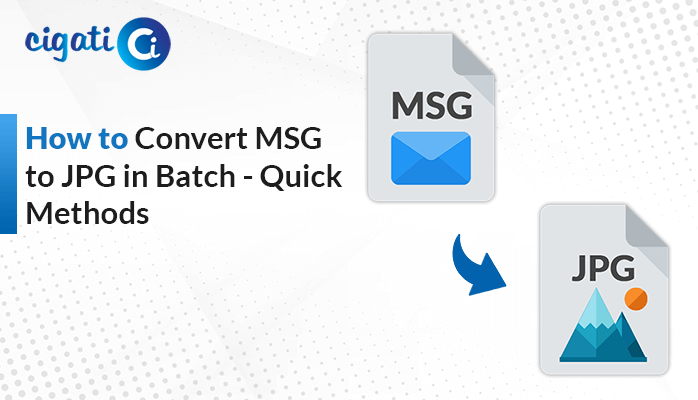-
Written By Saumya Tandon
-
Updated on July 3rd, 2024
Effortless Ways to Open CSV File on Mac without Excel
Do you need help opening and viewing CSV files on your Mac? CSV (Comma-Separated Values) files are commonly used for storing tabular data, making them a popular format for spreadsheets and databases. Luckily, accessing these files on a Mac is a straightforward process. Follow these simple steps to open CSV file on Mac using the Cigati CSV to VCF Converter.
CSV files have a structure as plain text files with a simple format. Each line typically represents a single record, and fields within the record are separated by commas. As the name suggests, the comma has the default delimiter between values in a CSV file. However, in some cases, other delimiters such as semicolons, tabs, or pipes (“|”) may be used depending on the regional settings or specific requirements.
Also Read: Export Yahoo Contacts to vCard
Why Do Users Want to View CSV File on Mac?
There are several reasons why users might want to open CSV files on a Mac without using Excel or any spreadsheet software:
- For a quick glance at the contents of a CSV file without the need to launch a heavy spreadsheet application like Excel, users might prefer alternative methods that are quicker and more lightweight.
- Sometimes, users want to perform simple text-based edits or view the raw data without formatting.
- Some users, particularly those comfortable with command-line interfaces, may prefer using Terminal commands to view or manipulate CSV files.
- Excel or other spreadsheet applications mightn’t always be readily available or compatible with the specific macOS versions or on every Mac system.
- Some users might be learning programming languages like Python or R that involve working with CSV files.
- For extremely bulky CSV files, opening them directly in Excel or any other spreadsheet software mightn’t be efficient due to performance limitations.
Overall, the reasons users want to open CSV files on a Mac without using Excel or similar applications can vary based on personal preferences. Moreover, it also depends upon the nature of the data, specific use cases, and the user’s comfort level with different tools and interfaces. Now, we will learn how to Open large CSV files on mac.
How to Open CSV File on Mac? – 3 Easy Ways
Do you need help with opening CSV files on your Mac without using Excel? No worries! Here are simple methods to access and view your CSV data hassle-free:
Method 1: Using the Numbers App
One way to open a CSV file is by using an app called Numbers. This app has already been installed on your Mac, so you don’t need to download it separately. Numbers make it simple for you to look at and change CSV files without any trouble. Here’s how you can do it:
- Start the Numbers application on your Mac.
- Then, Go to File >> Export To >> CSV.
- After that, choose Advanced Options and select UTF-8 for Text Encoding.
- At last, set the file path and click Export.
Method 2: Viewing with TextEdit
One of the easiest ways to open a CSV file on your Mac is using TextEdit, the default text editor on macOS.
- First, start TextEdit on your Mac.
- Afterward, go to File >> Open (or use Command+O).
- Then, locate your CSV file in the dialog box.
- Lastly, choose Plain text encoding from the drop-down menu and click Open.
TextEdit will open the CSV file, displaying the comma-separated values in a plain text format. However, due to the lack of formatting, this method might be less ideal for large or complex datasets.
Method 3: Viewing CSV Files in Google Sheets
Google Sheets, available online, allows you to open CSV files seamlessly. Consider using spreadsheet applications like Microsoft Excel, Apple Numbers, or Google Sheets for a more organized view and better formatting options for your CSV data.
- Initially, log in to your Google account.
- After that, click New >> File.
- Moving ahead, upload or drag and drop the CSV file.
- Finally, your CSV file will open on Google Sheets.
These applications interpret CSV files as tables, allowing you to easily navigate, manipulate, and analyze data columns and rows. Plus, they provide functionalities for sorting, filtering, and performing calculations on your data.
CSV File Viewer – Open Large CSV Files on Mac without Excel
For a more specialized solution, consider using the Cigati CSV Converter Tool. The Cigati CSV to vCard Converter for Mac is a really great and dependable tool. In fact, this software is competent enough to open CSV File on Mac without Excel. It helps you to open one or many CSV files to PDF on your Mac without needing Excel. How? Well, it changes these CSV files into vCard, VCF, or PDF documents. Moreover, users can also preview the files in a preview panel before the conversion.
- Download and Install the CSV Converter Tool and run it as an administrator.
- After that, use the Add Single CSV File option to select your .csv file.
- Then, pick vCard/VCF or PDF for conversion.
- Map CSV to vCard fields, set preferences, and destination path.
- At last, click Convert to start the conversion process.
Final Words
Opening and accessing CSV files on a Mac is a simple process that can be accomplished using various methods, catering to different preferences and requirements. Simply, you can prefer a straightforward text-based view or a more structured table format to open CSV file on Mac. Additionally, macOS provides multiple options to suit your needs. Remember, after making changes to a CSV file, save it in the correct format to avoid data loss or formatting issues. Now that you’ve learned these steps, effortlessly access and work with your CSV files on your Mac hassle-free!
You May Also Read: Import CSV Contacts to iCloud
About The Author:
Saumya is a proficient technical content writer with a deep passion for technology and a natural talent for writing. She excels in creating compelling and informative content that captivates readers on technology websites. Her areas of specialization include data migration, Email backup, and recovery, where her vast expertise enables her to develop superior-quality content that is both educational and stimulating.
Related Post




